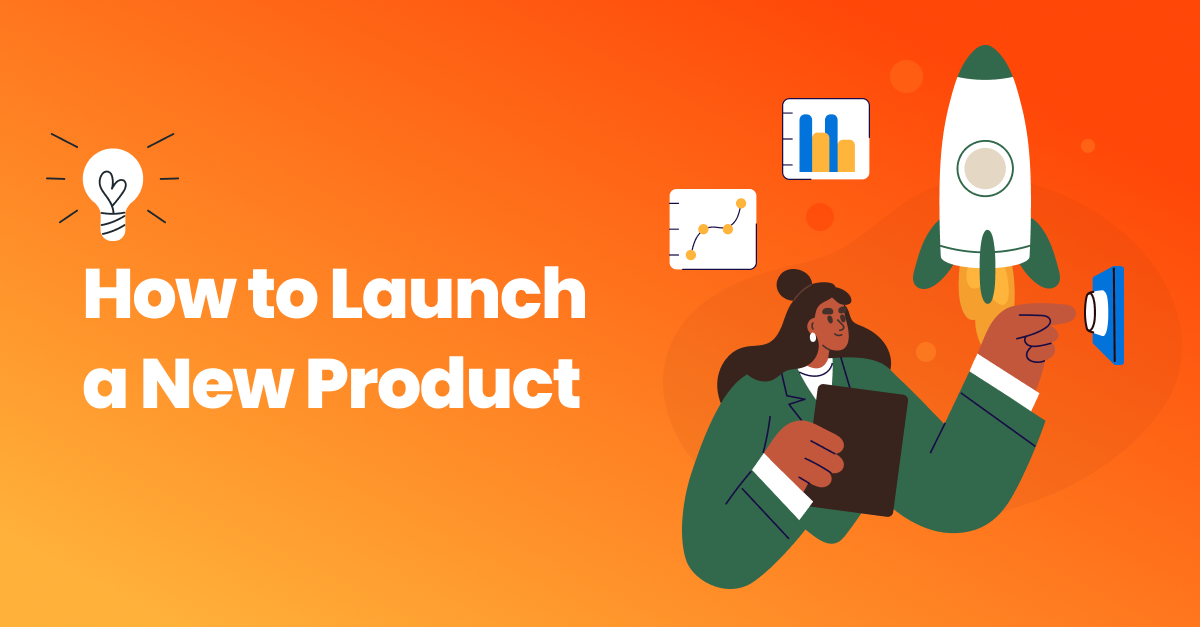
Imagine you sign up for a marathon. Would you immediately start running 42km? Or would you plan your training and track your progress regularly until race day?
Naturally, you’d choose the latter unless you’d want to end up with a sore body the next day!
What gets measured –gets improved, and the same applies to your conversion funnel. When you closely monitor your conversion funnel analytics, you have complete clarity on your progress and how to optimize your sales funnel.
Here’s a list of ten conversion funnel analytics you need to track to get more customers and boost revenue in 2024.
Sign-up rate is the percentage of website visitors or users who sign up for a particular action or service.
For example, this could be subscribing to a newsletter, creating an account, or opting in for a trial period.
Calculate this by taking the number of successful sign-ups and dividing it by the total number of visitors or users, always represented as a percentage.
For example, if a website receives 1000 visitors and 200 sign up, the sign-up rate would be 20%.
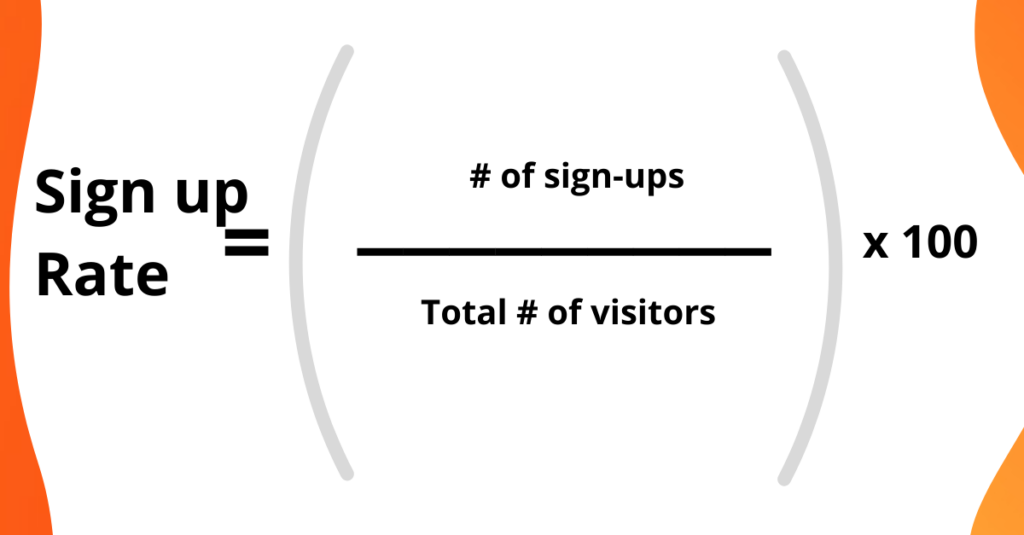
A sign-up represents the first step in the customer journey or the initial interaction between a user and the product.
A good sign-up rate indicates how well a website can capture the interest and trust of its visitors.
One way to improve your sign-up rate is to make sure you immediately give your users exactly what they’re looking for.
For example, Notion uses a welcome survey during the sign-up process to ask users about their intended use of the platform. This data helps personalize the user’s journey by displaying content that resonates with their needs.

Source: Notion
Fruity tip: “One significant change we implemented was the introduction of a tiered onboarding process, which resulted in a 15% increase in our signup rate. By segmenting user onboarding based on the user’s self-identified proficiency and needs, we provided a more personalized experience that increased initial engagement and reduced early drop-off rates.” – Rex Liu, Chef Revenue Officer at GoSite.
Product Qualified Leads (PQLs), are users who have already tried a product and are showing interest in buying the subscription.
Instead of making potential customers fill out forms or go through specific qualifying steps, PQLs allow sales teams to focus on encouraging prospects to interact with the product directly.
Here’s how to calculate the PQL rate:
For example, if you had 100 new registrations in a month and 40 turned into PQLs, your PQL rate would be 40%.
The main goal of a PQL strategy is to immerse the customer in your product so that they can truly understand its value.
Shiv Narayanan, in his newsletter “How to SaaS,” talks about how you can identify PQLs in your conversion funnel:
“Identifying the proper milestones is critical. For example, by analyzing product metrics, Shopify may know that people who connect their Stripe accounts are 200% more likely to become paid customers (this is just a guess).“
The Activation Rate is the percentage of users who take a desired action, such as completing a purchase or registration.
Calculating your activation rate is straightforward as long as you know what milestone you’re tracking.
This milestone can differ from company to company, depending on the product and business goals.
For example, a social platform might track the percentage of users who add their first friend, while a music-streaming application might look at how many users create their first playlist.
To calculate, divide the number of users who completed that activity by the total number of users who signed up for your product.
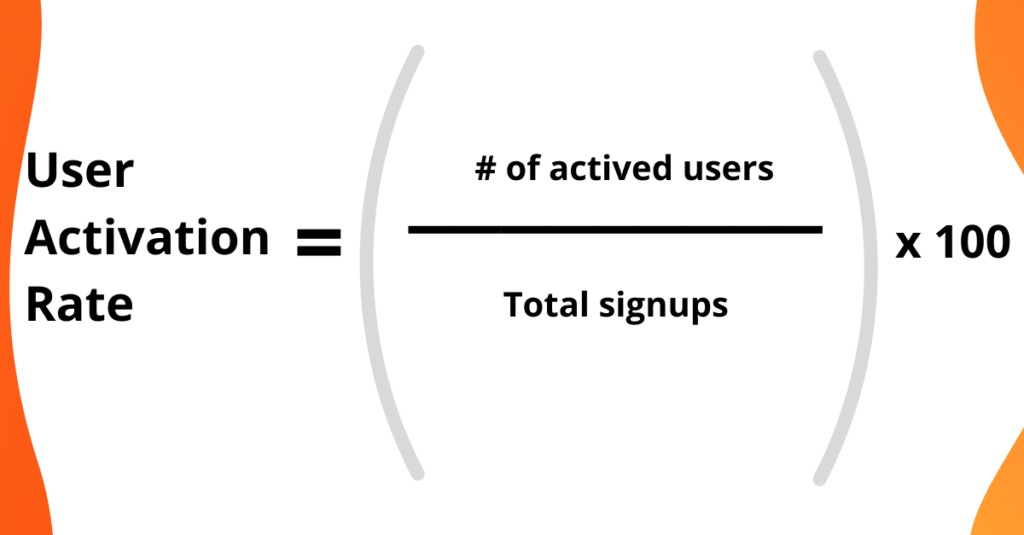
Tracking the activation rate is essential because it helps measure the success of your onboarding efforts.
A low activation rate could indicate that your onboarding process is complex or confusing and users are quitting before completing key milestones.
A consistently poor activation rate might also mean your marketing and sales efforts are attracting low-quality leads.
Fruity Tip: “Our users struggled to grasp the value proposition, so we revamped the onboarding with clear steps and visuals and introduced in-app tooltips to guide users. Consequently, our activation rate surged by an impressive 18%. It was a very big win for me and my team.” – Irene Graham, Co-Founder at Spylix.
The churn rate shows the percentage of users who stop using your product within a specific period.
You can calculate this by finding the number of users who stopped using your product and dividing it by the total number of users at the beginning of the period, then multiplying by 100.
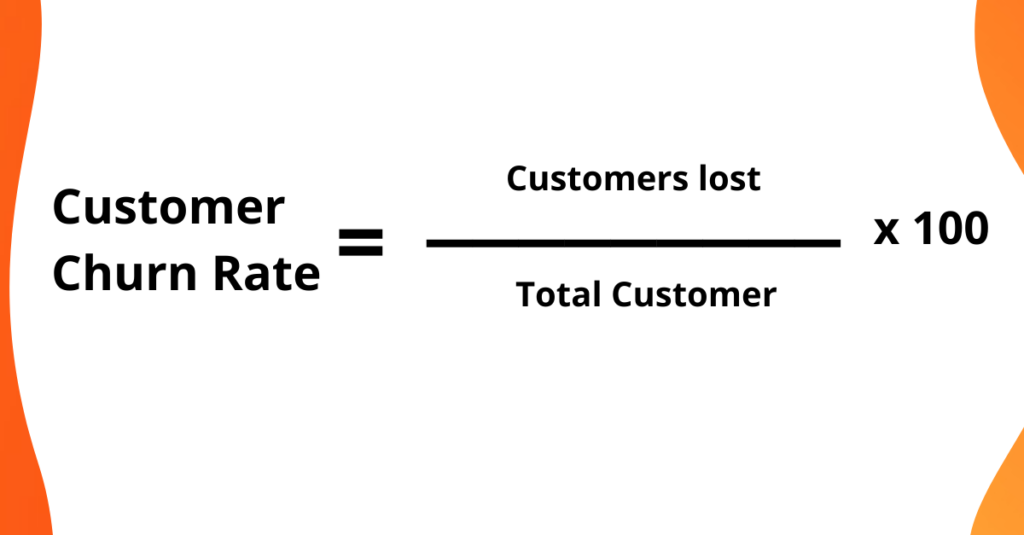
By reducing the churn rate, you improve customer retention, which leads to increased profitability and long-term relationships with your customers.
👀 Check out how FitnessPlayer Doubled its User Base and Reduced Churn
One way to decrease churn is to focus on positive switching costs i.e. offer incentives to continue using your product. You need to make sure your customers refrain from switching to your competitor, so offer benefits that make them contemplate making a switch.
For example, Heap offers a rewards program for its customers wherein if they add a Heap badge to their website, users can gain access to 20,000 free sessions per month. It is a great way for Heap to encourage its customers to promote the platform on their website, while also offering value to users who wish to track website analytics.

(Image Source: Heap)
Customer retention rate measures the number of customers a company retains over a given period. It’s the percentage of a company’s existing customers who remain loyal within that time frame.
First, identify the time frame you want to study to determine your retention rate. Next, collect the number of existing customers at the start of the period. Then, find the total number of customers at the end of the period. Finally, the number of new customers added within the period will be determined. For instance, if a business commences the year with 10 customers and loses two, the retention rate would be 80 percent.
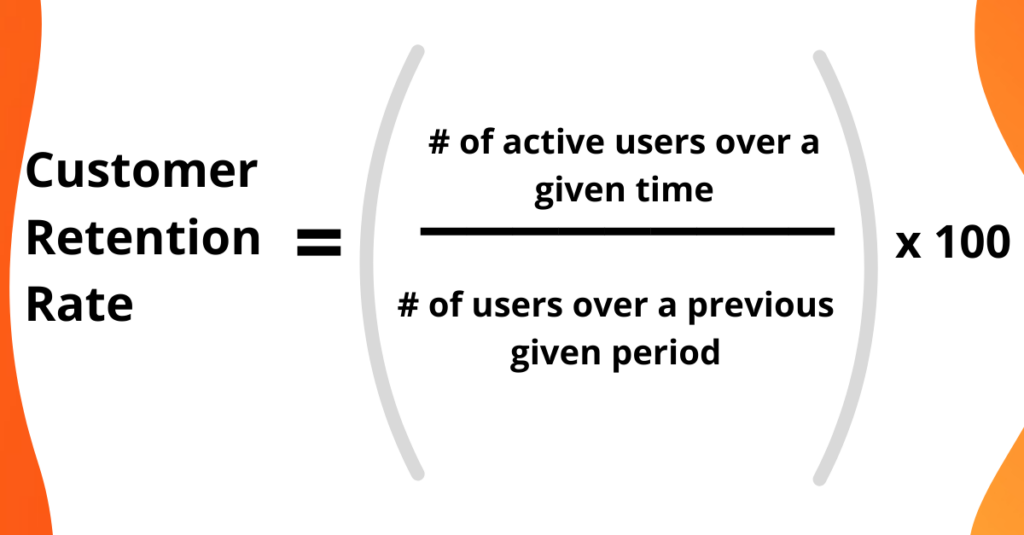
Why is customer retention important? Customer retention helps with a company’s short-term and long-term success. Keeping current customers is usually more cost-effective than acquiring new ones. Moreover, loyal customers also tend to make repeat purchases, thereby increasing profits.
Here are some tips to improve customer retention:
💡Also read: Product Manager’s Guide to User Retention: Definition and Measurement
Customer acquisition cost (CAC) refers to the total sales and marketing cost required to acquire a new customer over a specific period. This metric is crucial for determining a company’s profitability as it compares the money spent on attracting customers to the number of customers gained.
The first step in calculating CAC is determining the evaluation period (month, quarter, year). Then, add the total marketing and sales expenses and divide that total by the number of new customers acquired during the period. The result value should be the company’s estimated cost of acquiring a new customer.
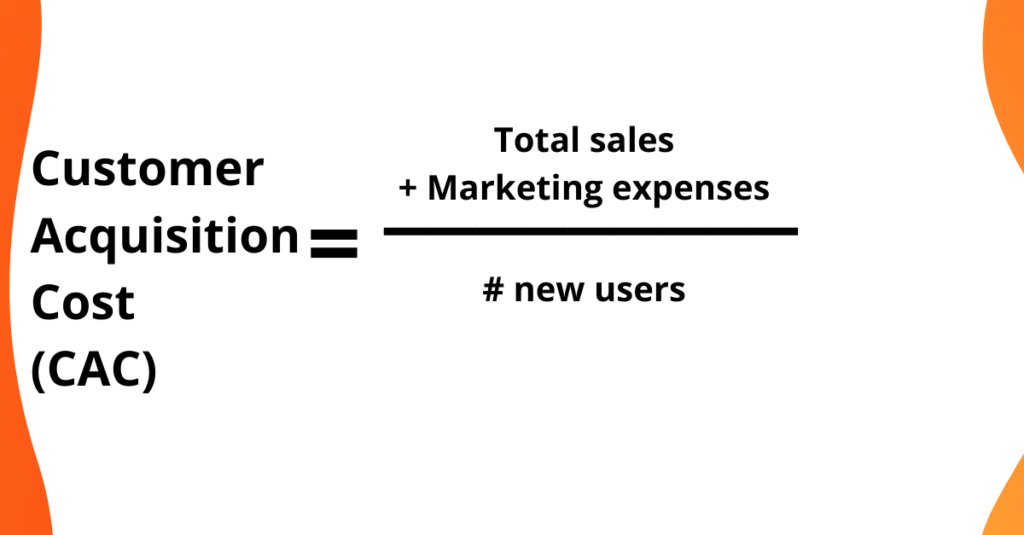
To Improve CAC, invest in conversion rate optimization (CRO) to simplify the process of converting visitors into leads or leads into customers. You can optimize your website for mobile usage, test your website copy for clarity, and create a simple sales process.
For instance, Basecamp’s landing page has clear and simple copy and allows users to explore how their product works right away without the need to contact their sales team.

(Image Source: Basecamp)
Customer lifetime value measures the total net profit a company can expect from a customer throughout their entire relationship. It considers your customer’s initial purchase, repeat purchases, and the average duration of their relationship with the company. Calculating CLV helps you understand customer loyalty and whether your customers will continue to make repeat purchases. Here’s the formula:
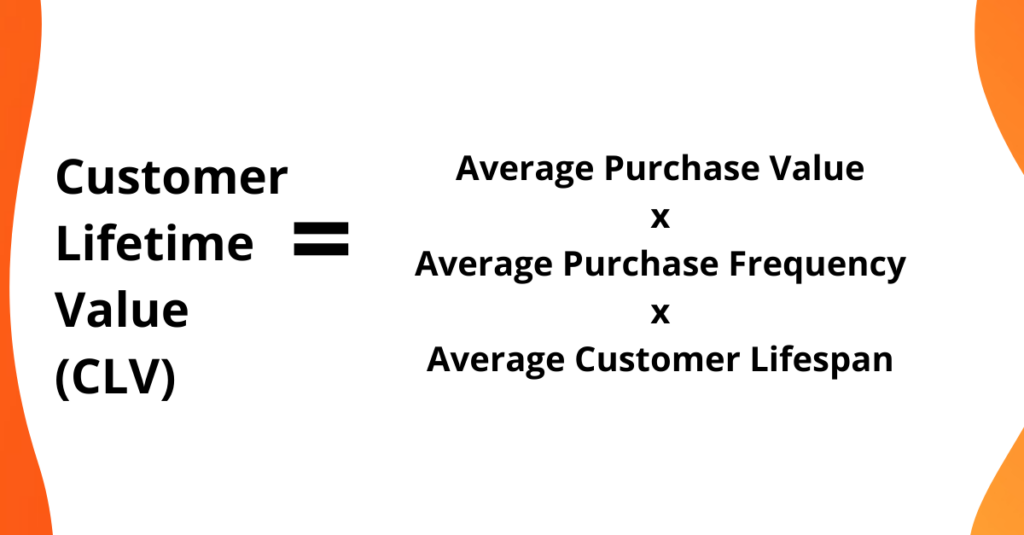
Our tip to increase customer lifetime value is to ensure customer loyalty by offering incentives and loyalty programs.
Net Promoter Score (NPS) is a way to measure how likely customers are to recommend a company to others. Instead of asking if customers are satisfied, it focuses on whether they’d tell friends or colleagues about the company. It’s based on one question: “How likely are you to recommend us to a friend or colleague?” You can calculate NPS by subtracting the number of detractors (scores of 0–6) from the number of promoters (scores of 9 and 10). You divide that amount by the total responses and multiply the final number by 100.
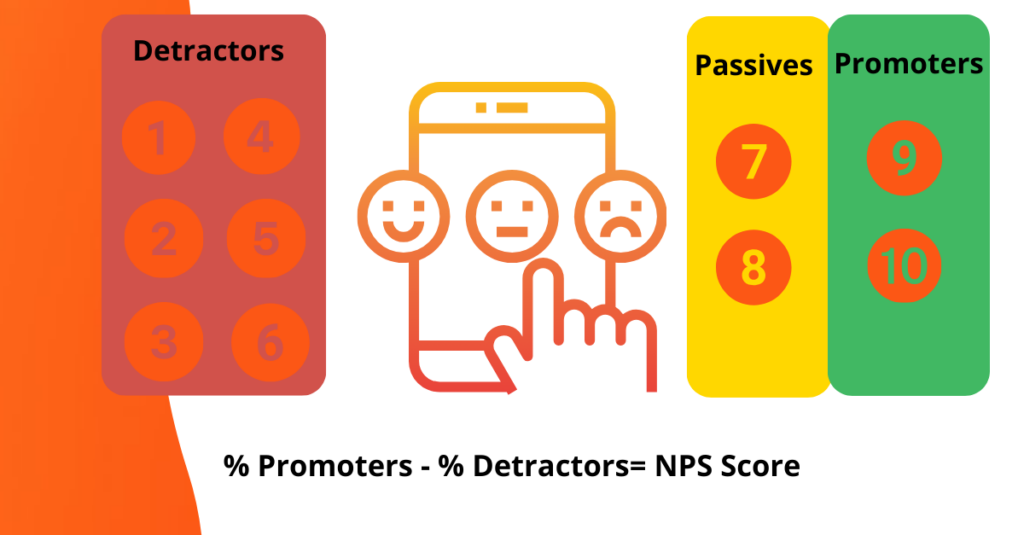
A high NPS suggests strong customer loyalty. By tracking NPS over time, companies can see how they’re doing and identify areas for improvement in customer satisfaction and loyalty.
Sankit Javiya from Mailmodo explains how he uses every component of the NPS score to inform his product strategy:
“We track NPS every quarter to monitor our progress, both from a product and service standpoint. The feedback from the detractors helps us shape the product roadmap, and the promoters help us double down on our GTM strategy regarding why customers buy our product. Along with NPS, we measure CSAT on our customer queries, which resonates with the retention rate. The better the service level, the higher the retention and referrals from the customers.”
👀Learn how Factors improved Product NPS score by 40% by integrating an in-app feedback widget with their Slack channel.
“Feature adoption” refers to when users regularly start using a feature, whether it’s an existing one or a new addition, to solve their problems.
New features add value to the product, addressing user pain points. This leads to increased user satisfaction, loyalty, and long-term retention. A high feature adoption allows companies to achieve their business objectives and generate more revenue.
To calculate the feature adoption rate, divide the feature’s monthly active users (MAUs) by the number of user logins in a given period and then multiply by 100.
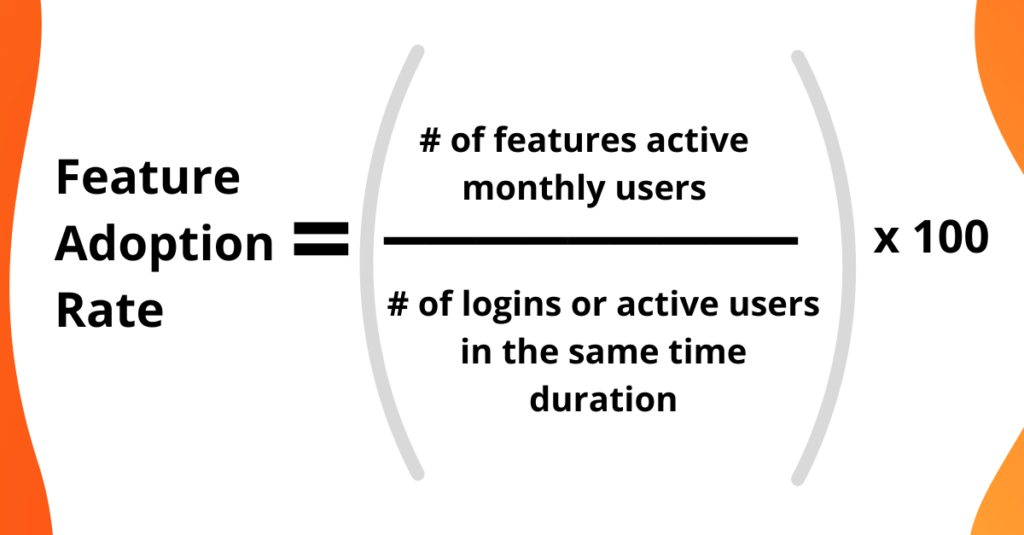
You can improve your Feature adoption rate by prioritizing new features in product development based on their value to users. Rather than simply releasing numerous features to increase the number, the focus should be on features that genuinely solve user problems or enhance their experience.
Fruity Tips: Product Fruits’ Hints and the Life Ring Button improve the adoption rate by giving users easy access to onboarding materials and support documentation. Our platform also includes third-party chat widgets for convenient support, making it easier for users to navigate and use.
The average deal size (ADS) indicates the average amount of money a business receives per deal it closes. It is typically calculated monthly or quarterly and helps companies uncover crucial aspects of their sales process and trends in their sales pipeline metrics.
You can use ADS insights to improve your sales practices or identify the price points at which leads are most likely to convert. A higher ADS indicates that the sales team is closing larger deals, resulting in increased revenue.
Calculate ADS by taking the sum of each closed-won opportunity within a given period and dividing it by the total number of deals made in that same period.
One way to increase average deal size without increasing your pricing is to upsell and cross-sell your product to existing customers. Loom uses well-placed in-app messaging to persuade users to upgrade to a better plan.

(Image source: Loom)
Tracking conversion funnel analytics gives you a sneak peek into how customers resonate with your product while highlighting the areas you can improve upon. If you want to ensure you meet your KPIs regularly, you need to build exceptional onboarding flows.
Luckily, Product Fruits has a wide suite of tools to help you not just achieve but exceed your goals.
Whether you’re creating personalized product tours with onboarding checklists or adding contextual tips with helpful hints, our tool can do it all.
Try Product Fruits for free today and meet your conversion goals in no time.